10. Pelvic Tilt

A tight piriformis can cause sciatic pain. Lift both legs to a 90° angle. Cross your right ankle over your left thigh, place your hands under your left hamstring, and gently raise your left leg toward your chest. Hold for 30 seconds, lower your legs, return to starting position and repeat with the other leg.
11. Quadrupled Arm/leg Raise
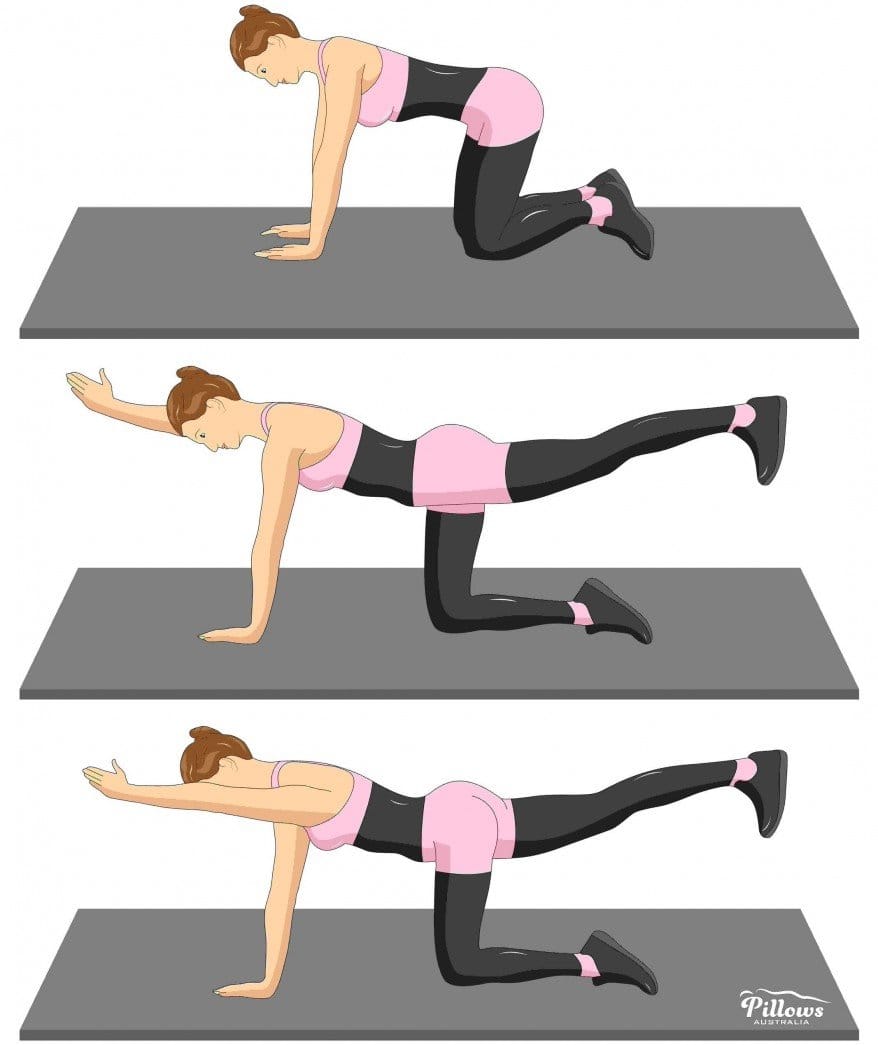
Kneel on your hands and knees and raise one arm out in front of you. Do not twist or allow your shoulders to rise up. Slowly raise and straighten the leg on the opposite side. Make sure that you keep your neck and hips as motionless as possible. Repeat this stretch with the other arm and opposite leg.
[adinserter block="2"]
12. Partial Curl
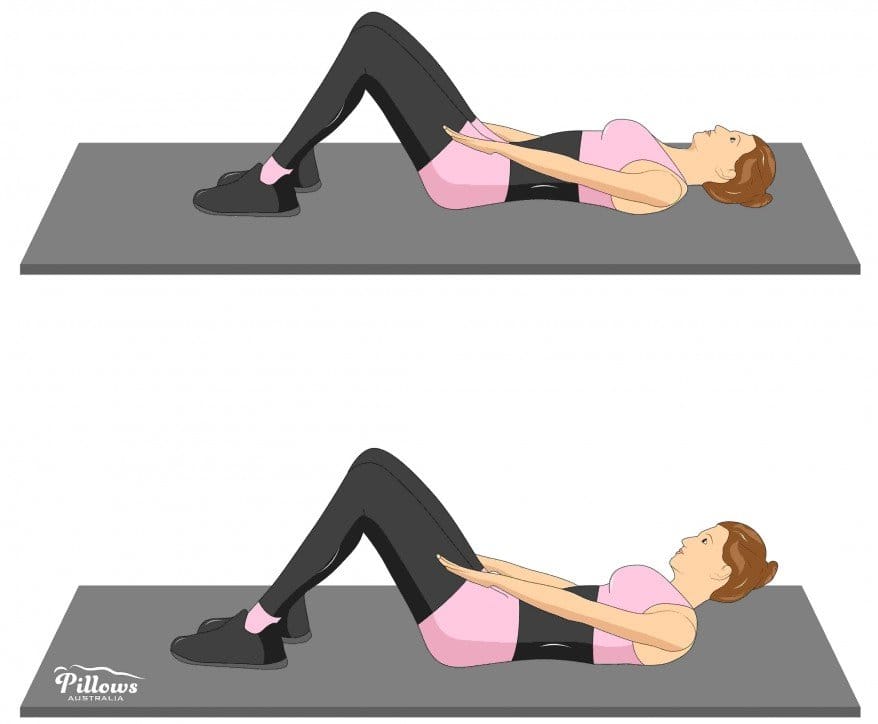
Lie on your right side with your hips, knees, and shoulders in line. Slightly bend both knees, then grasp your left shin with your left hand and pull gently toward your buttocks. Hold for 30 seconds, release, and repeat on the other side.
13. Extension Exercise
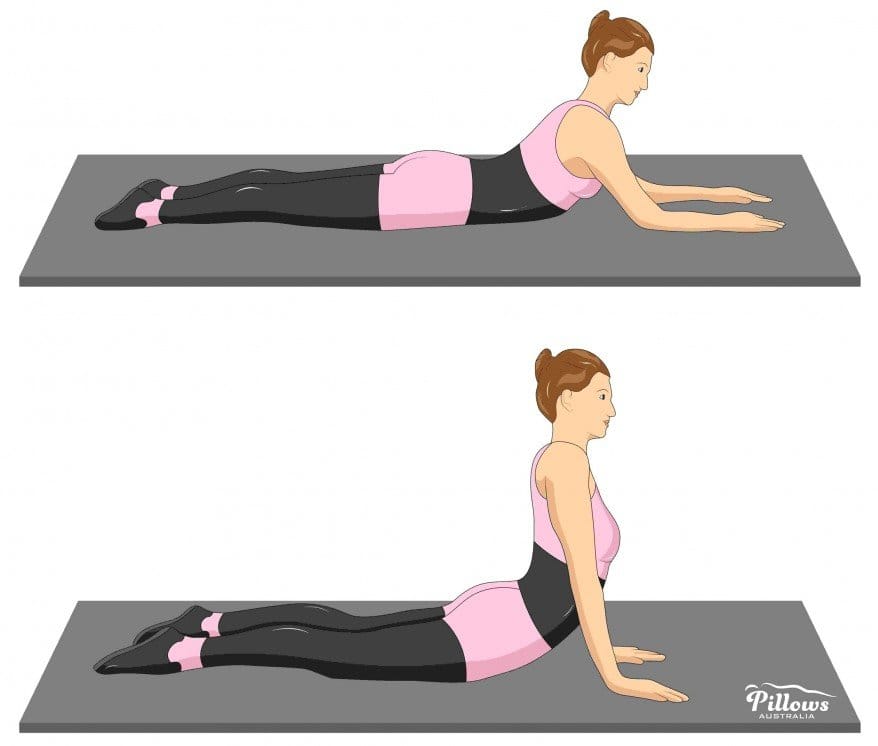
Lie flat on the floor with your face down. If lying flat is too uncomfortable, then place a pillow underneath your stomach. Hold this position for 60 seconds and then press down on your hands to prop yourself up on your elbows. Hold this position for 1 second and then lower yourself back to the floor. Repeat this sequence 10 times per set.
[adinserter block="3"]
14. Side Plank
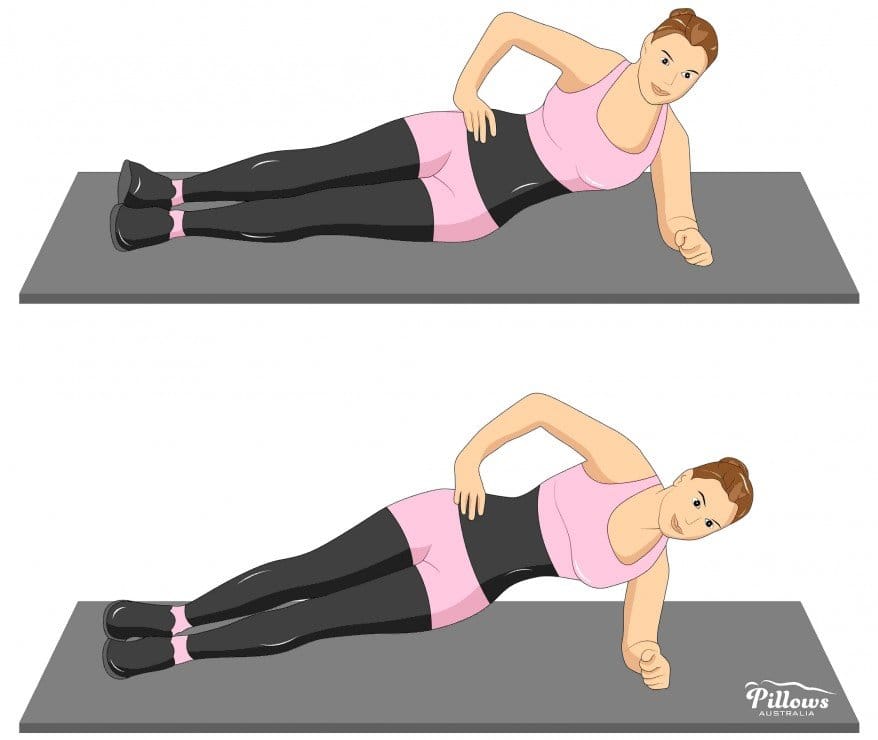
Lie on your side and use your arm to prop your upper body up on your elbow. Keeping your legs straight, lift your hips off the floor and hold them for 6 seconds. Afterwards rest for 30 seconds. Repeat this 3-5 times and work up to holding the upright position for at least 30 seconds.
15. Gluteal Stretch
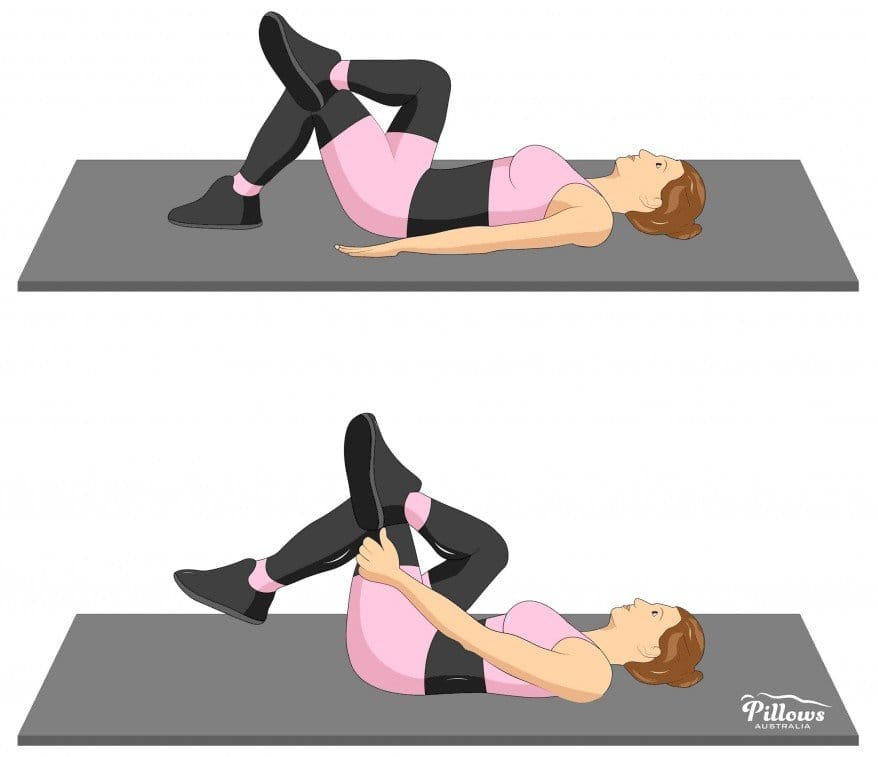
Lie on your back with legs straight. Raise your arms to shoulder level, perpendicular to your body, palms down. Lift your right leg off the floor to a 90° angle and slowly rotate it across the left leg while you turn your head to the right. Place your left hand on your bent knee and gently stretch for 20 seconds, allowing your back to move with your bent leg. Slowly return the right leg to the starting position and lower to the floor and then repeat with left leg.
16. Prone Spine Stretches
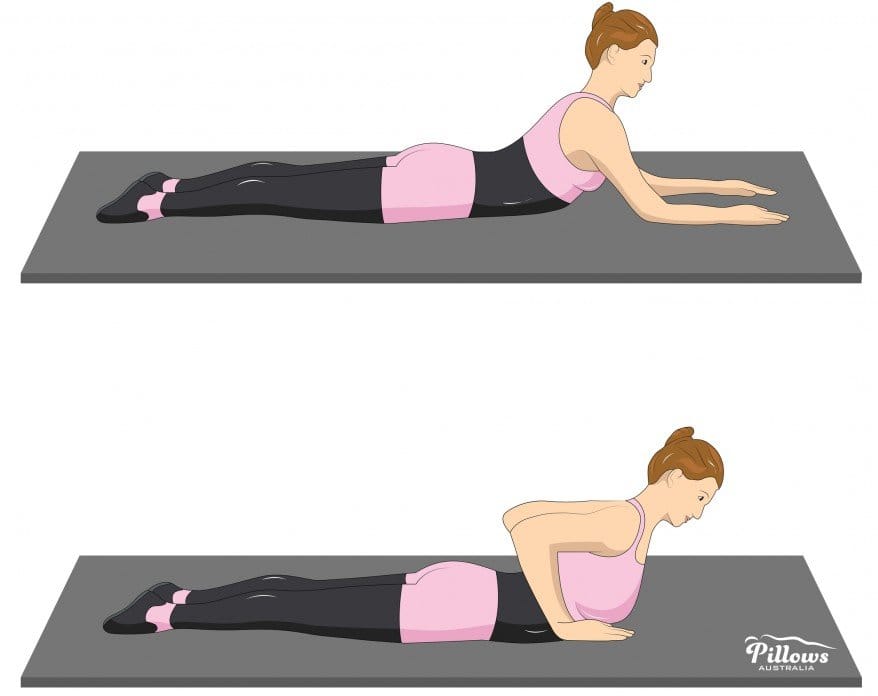
Lie on your stomach with your hips and legs on the floor. Place your palms under your shoulders and make sure that the tops of your feet are flat on the ground. Now slowly lift up your head as you engage your abdominal muscles and continue this movement until your chest and upper body are off of the floor and your arms are straightened. Your legs and fleet should remain on the floor. Hold this position for 15 seconds and then repeat the stretch 5 times.
[adinserter block="4"]
17. Bridge Pose
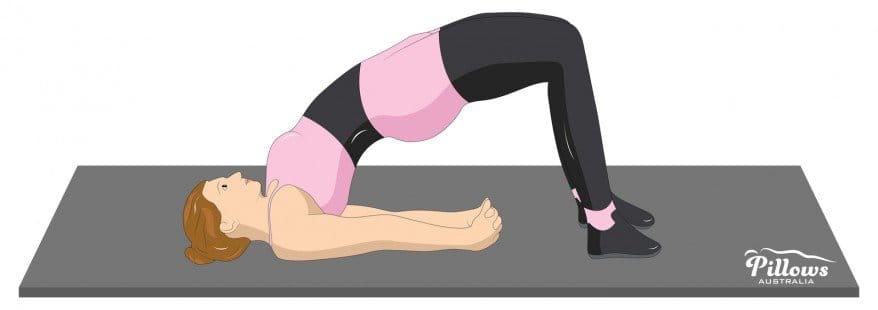
Stand behind a chair, table, or other sturdy object at arms’ length, at shoulder or slightly lower height. Put both hands on the chair, bend your knees slightly, and lean forward, allowing your butt to move back while your head drops in line with your spine until it is between your upper arms. Hold for several seconds, return to starting position, and repeat.
18. Relaxation

Now that you have finished the stretching routine, take a few minutes to relax. You can place a blanket under your head and a pillow under your legs. Simply lie flat with your hands out to your sides and breathe. Congratulations! You’re done for today!
By practicing these stretches, you can reduce your back pain and get back to enjoying your life. However, you should have your stretching program reviewed by an experienced physiotherapist before you begin to ensure that you are not performing any stretches that will worsen your condition.
How Does Stretching Improve Your Health?
Stretching isn’t only about helping you to maintain your fitness level it can also be beneficial for your overall health. You may think that you only need to focus on exercising as that is where you will burn the most calories.
However, you also need to stretch to ensure that your muscles function properly because stretching helps to increase blood flow to your muscles. Here are some of the ways in which stretching can improve your quality of life by reducing back pain and other illnesses:
- Increase Your Athletic Performance – The most common argument for stretching is that it can help you workout better. Stretching can help to improve your range of motion, which can improve your athletic performance and lower your risk of injuries. In addition with increased flexibility from stretching, you’ll also enjoy improved balance and coordination;
- Improve Your Posture and Alleviate Back Pain – If you don’t stretch your muscles, you can also begin to experience poor posture. When you stretch, you can correct your posture and ensure that your spine stays in alignment by lengthening your tightened muscles back to their ideal positions. If you suffer from back pain, stretching can help you to reduce or eliminate your back pain;
- Increased Circulation – The increased blood flow that is supplied to the muscles by stretching also ensures that your muscles receive more nutrients. This means that you can lower your muscle soreness after workouts and increase your recovery time from muscle and joint injuries;
- Reduced Stress – Like exercise, stretching is a great way to reduce your stress levels. Stretching gives you an opportunity to recharge your body by giving you a few minutes of calm each day. If you want to get the most benefits from stretching, you need to incorporate stretching into your daily workout routine or as a part of your daily life.
Souce: https://www.pillows.com.au/blog/18-easy-stretches-in-18-minutes-to-help-reduce-back-pain/

